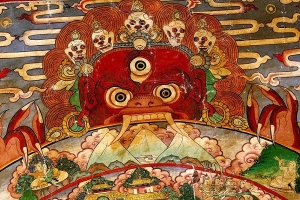Tibetan Dzi bead, a treasure of Tibetan culture and a cultural icon, has not only gained attention for their rarity, but they have also been adopted as an exclusive souvenir by Tibetan tourists due to the spirituality, and their historical significance. Dzi beads, as one of the rarest treasures in Tibet and Himalayas are, without a doubt, among the world’s most valuable. The price of ancient Dzi beads can be as high as millions of Yuan. Over time, however, the significance of Tibetan Dzi beads has evolved beyond their material value, transforming into a powerful spiritual and cultural emblem.
What are Tibetan Dzi beads?
Dzi beads are ancient beads that have been found throughout Tibet and nearby regions, typically crafted from natural agate or chalcedony. their materials but also for their enigmatic origins and rich cultural significance. They come in different shapes, including round, oval, and irregular forms, and hold both decorative and deep cultural meanings.
Dzi beads are known for their distinctive eye-shaped patterns, especially in the form of “eye beads”. These patterns are not only considered protective talismans by Tibetans but are also believed to possess potent spiritual abilities that bring luck and safeguard the wearer. With a history spanning thousands of years, some ancient Dzi beads still adhere to traditional production techniques and materials, maintaining a link to their ancient origins. The history and beginnings of Dzi beads can be traced back to the Indus Valley Civilization between 2000 and 1000 BC, where jewelry-making techniques using materials like agate held cultural and religious importance based on historical research and archaeological findings.
In the ancient folklore of Tibet, the mysterious beginnings of Dzi beads are often recounted. According to legend, it is believed that Padmasambhava used a mystical enchantment to change regular stones into Dzi beads, which were later dispersed across Tibet. Another belief suggests that Dzi beads are formed magically by insects and the surrounding nature. Under certain circumstances, certain insects are said to metamorphose into Dzi beads.
Types and Value of Tibetan Dzi Beads
Tibetan Dzi beads come in a wide variety of types, which can be categorized into different levels based on their popularity. The value of a Dzi bead is generally determined by its pattern, color, rarity, and historical background. Based on these factors, Dzi beads can be divided into two categories: Category One and Category Two, with Category One beads typically being the most precious.
Category One Dzi Beads
Category One Dzi beads are usually the most sought after, particularly those featuring the “eye” pattern. These eye-patterned Dzi beads are regarded as the most sacred and powerful, believed to offer strong protection and blessings. Common Category One Dzi beads include:
- Eye Dzi Beads: These come in shapes such as oval, barrel, and spindle, and feature eye-like patterns. They are considered the classic and most prized Dzi beads.
- Oval Dzi Beads: Sometimes adorned with lotus or longevity vase patterns, these beads are especially popular in certain regions of Tibet.
- Tiger Dzi Beads: Oval-shaped with double-stripe decorations, some rare tiger Dzi beads may have even more stripes, making them highly valuable to collectors.
- Tasso Dzi Beads: These beads feature a single stripe, but differ from tiger Dzi beads, which have double stripes.
- Six-Eye Dzi Beads: This type includes both highly decorative varieties and more localized types, often originating from India and the Middle East, but they hold an important place in Tibetan culture.
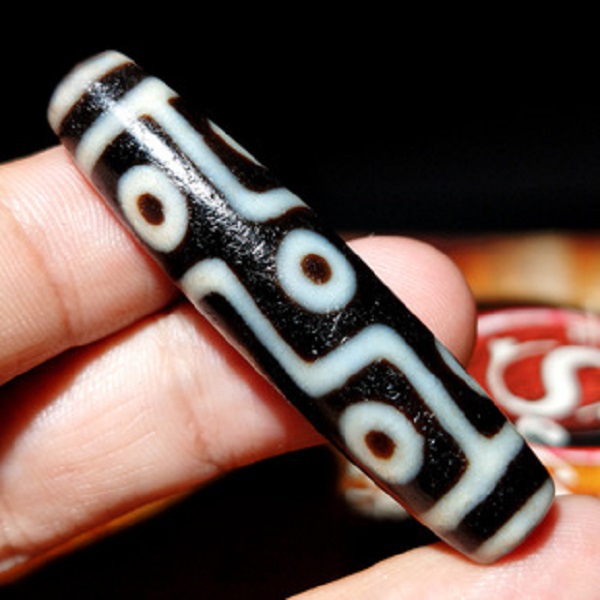
Category Two Dzi Beads
Category Two Dzi beads are generally valued lower than Category One beads, but they still possess considerable collectible and cultural value. The key characteristic of Category Two beads is that they feature unusual decorations, but usually lack the “eye” pattern found in Category One beads. Examples of Category Two Dzi beads include:
- Bell Dzi Beads: These beads feature both decorative elements and eye patterns. While their market value is slightly lower, they are still highly favored by collectors.
- Stripe Dzi Beads: Typically adorned with stripe patterns, these beads have irregular shapes. Although they are not as precious as Category One beads, they still hold significant cultural value.
- Peng Dzi Beads: These beads are typically gray or black with white decorations. They have irregular shapes and tend to be larger and coarser in appearance.
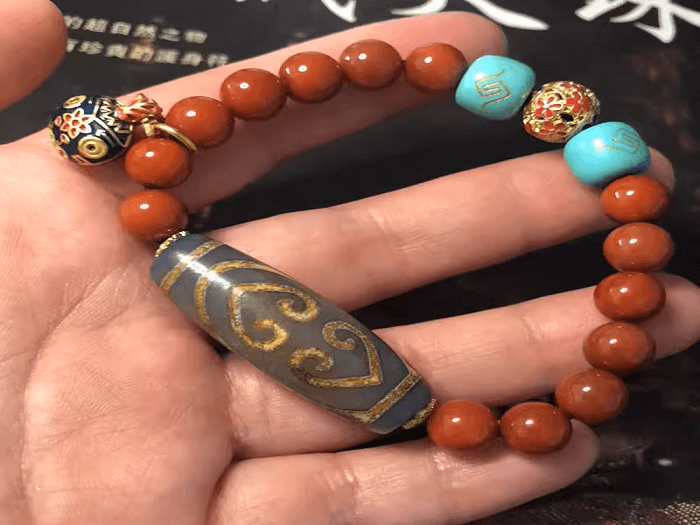
The functions and wearing of Dzi beads
Dzi beads have long been recognized for their healing powers in Tibetan culture; wearing Dzi beads has many perceived advantages; in particular they’re considered spiritual treasures that bring many benefits when worn on one’s person. Their wearers believe it brings many positive outcomes: improved posture and concentration levels as well as stress relief and better sleep are among many.
- Maintain a comforting mood: Wearing Dzi beads regularly can provide significant relief, keeping people calm when confronted by life’s obstacles and creating happiness in everyday moments.
- Peace of mind: Dzi beads serve the unique function of mirroring our magnetic fields and creating harmony within ourselves – helping the wearer stay more grounded, tranquil, and stable.
- Strengthen physical fitness: Dzi beads feature powerful magnetic fields which can stimulate body meridians, promote blood circulation, and ultimately enhance physical fitness and health.
- Sleep Aid: Wearing Dzi beads may help ease mind, reduce fatigue, and boost sleep quality for those experiencing insomnia.
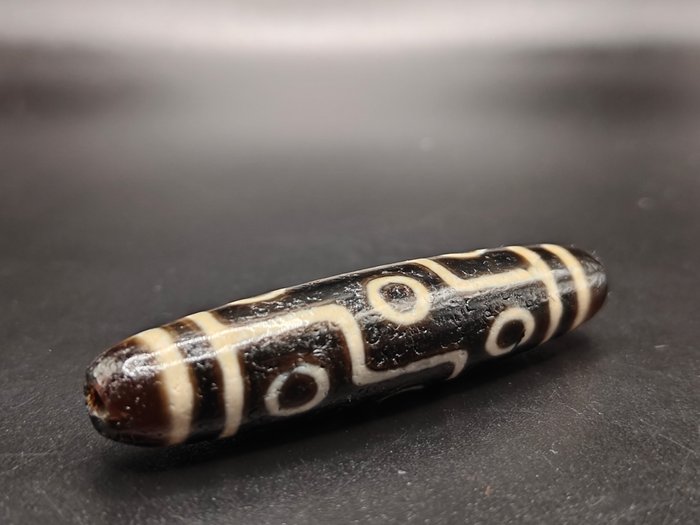
Taboos in Wearing Tibetan Dzi Beads
Although Tibetan Dzi beads possess various magical effects and energies, it is important to observe certain taboos when wearing them to maintain their spirituality and potency. Below are 6 taboos to avoid when wearing Dzi beads:
- Do not wear Dzi beads in impure places.
- Do not wear Dzi beads while bathing.
- Avoid having the Dzi bead come into contact with blood.
- Avoid allowing others to touch your Dzi bead.
- Do not leave the Dzi bead unused or idle for extended periods.
- Do not wear damaged Dzi beads.
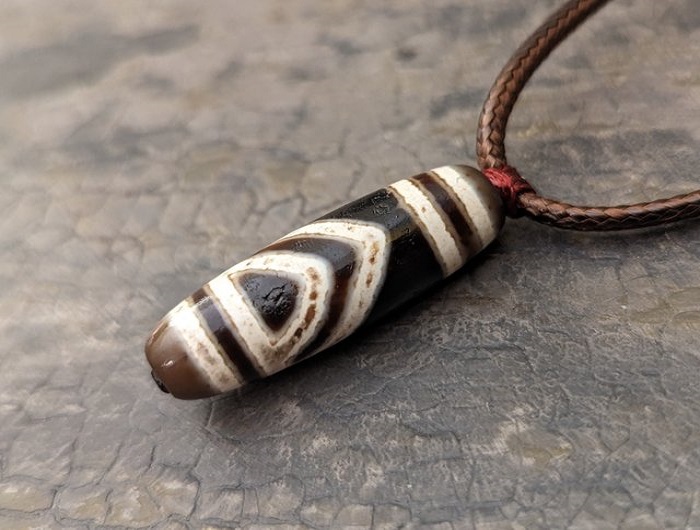
As Tibetan Dzi beads have grown increasingly popular with collectors and tourists around the globe, more imitation or lower quality Dzi beads have appeared on the market. When purchasing Dzi beads it is crucial that a reliable merchant be chosen when making this investment; Journey2tibet Travel Agency as a professional travel company in Tibetan areas with years of experience can offer high quality authentic Tibetan Dzi beads along with individual purchase consultation and appraisal services for customers looking for authenticity when selecting merchants to buy from.
Should you require any further Dzi beads information and services, do not hesitate to get in touch. We look forward to serving you.






